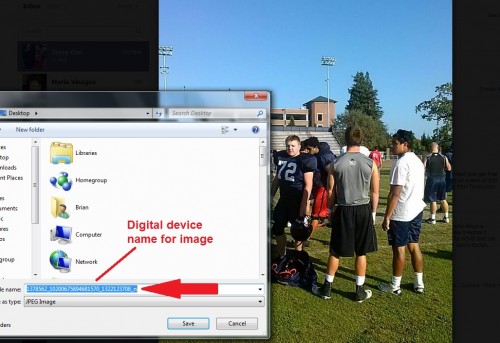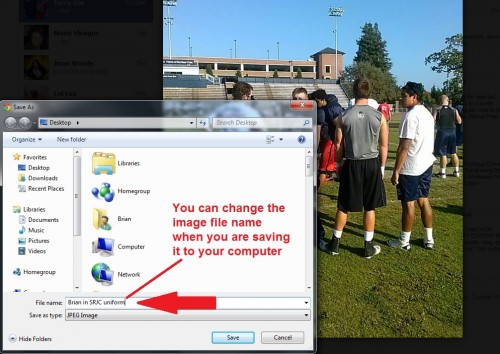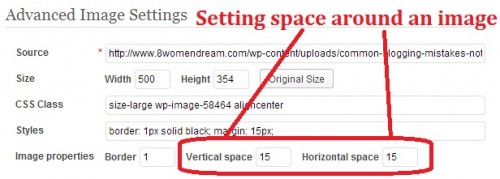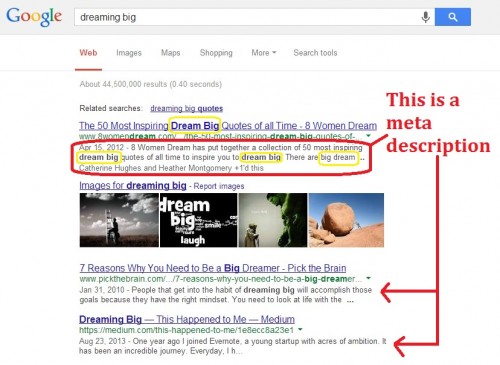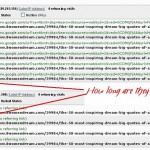Much of what I do happens behind the scenes here at 8 Women Dream. It’s a lot of sitting in one position, gazing at a computer screen, reading, correcting and reflecting on what the reader will see and feeling my legs go numb. When you set yourself up as the editor of a blog there are a great many publishing nuances that can be easily missed by, well, people like you: writers blogging only from the creative side of your brain.
When you blog, you are running a website (a business) — like it or not. And when you run a website you need acquire, hire, or understand the following skills:
1. How html works.
2. How your blogging platform works (WordPress, Blogger, Tumblr, etc)
3. How to post-process images with an understanding of pixels.
4. An understanding of Internet copyright laws.
5. How search engine optimization is a part of every post, how sites are indexed and how the blog post titles and meta descriptions play a role in being read by the world.
6. How people read on the Internet.
7. How social media plays a role.
8. How to build a community through connecting with other blog owners.
9. How Internet advertising works.
10. A basic understanding of graphic design.
Too many writers become bloggers with the belief that all you need to do to be an online success is sit down an crank out a blog post, hit publish and sit back and wait for the world to discover the amazing you. I have to admit that I do grow tired of explaining over and over to writers who blog that blogging is not about writing what you want, but writing what readers want to read and offering it in a way that makes it easy to love the amazing you.
Since I’ve spent the last ten years blogging and fixing content I want to share with you the most common mistakes I STILL see writers make as they venture out into the blogging world. Yeah, it’s probably you.
Here are the most common mistakes that I fix —
1. Removing unnecessary code —
The reason bloggers need to have a basic understanding of html is the same reason an author needs to understand a literary agent’s book submission guidelines: follow the rules in order to get read. Html sets the look of the blog content for the reader and since the Internet is still an imperfect place, sometimes you need to fix what is wrong in your blog post by going into the html editing side.
Because nothing else will fix what has gone sideways.
The biggest mistake I still see bloggers make is copying and pasting from a writing programs like MSWord (or email programs or other websites) directly into the visual editor of their blogging platform. This causes hidden printer code (or other code) to be inserted with the post which changes the default formatting into a hot mess.
Even though WordPress has this lovely “Paste as plain text” button in the editor screen, all to often bloggers forget to use it.
The most common code mistakes I regularly clean up are:
- Extra non-breaking spaces: (Creates space where you may not want it)
- Unnecessary Div tags: <div></div> (Changes your ability to add bold, italic and format items within the div code).
- Misuse of H2, H3, H4, H5 tags. (These are meant for headings with keywords that follow the order of sequence).
- Repeat of titles. (In WordPress the title is the H1 tag and it doesn’t need repeating in the post itself).
2. Fixing images —
When you take a photograph with a digital camera or mobile device, the camera saves the photograph as a number like 01040210.jpg. This is how the device organizes the order in which an image was taken.
An example of the digital name —
An example of a real image name —
You must always open your images in some type of photo processing software (pixlr.com is a free online photo processing site if you need one) and prep them for your blog post. The image needs to be renamed from the number sequence and saved to what the image is about along with adjusting the size (if needed) down to the pixel width of your content space. Often they can be adjusted in your blogging platform, but please change the name.
Learn to set a boundaries around your images too. It’s called vertical and horizontal spacing and all blogging platforms make this soooooo easy to do. Really.
3. Fixing keywords —
(Sigh). While I agree that a writer should write for the audience first and forget about writing for search, once a post is complete it is very easy to go back and adjust your post by inserting keyword phrases. Plus choosing the right keyword phrase that best describes your post can reveal to you if your story has gone off course. If you can’t interject your keyword phrase throughout your post then my guess would be that you didn’t stay on subject.
Here’s an example of a blog post written by Copyblogger where “keyword research” is the keyword phrase —
If you Google the term “keyword research” you will find Copyblogger ranks on the first page of Google search for this term (above Wikipedia). This is because they understand keyword density (the number of times you use the phrase in an article) and Copyblogger has also written at least 10 great articles on the subject, which shows that writing more than once on a particular subject allows you become a go-to expert by search engines.
If only I could get bloggers to correct this one important step (see me banging my head on the keyboard).
4. Fixing meta-descriptions to read like a marketer wrote them —
(Sigh #2) Search engines generally truncate meta-descriptions longer than 160 characters, but you get 160 CHARACTERS to convince someone to read your story. I am amazed at how little bloggers use this wonderful marketing feature to sell the public by leaving out their keyword phrase and excluding a call to action.
Meta descriptions need to answer the question for the searcher, “What’s in it for me?” and include action statements like:
- Read now.
- Get started today.
- Exclusively.
- Treat yourself.
- Get answers.
- For more information.
- Are you ready?
- Learn more.
- Improve your.
- See how.
- Learn why.
- Watch video.
One common mistake that bloggers make is not using the full 160 characters to sell the public on a blog post. I’ve seen meta descriptions say –
“I love the fall.”
Really? Is that all you’ve got?
When it should have said (with it being an article about “inspirational fall photos” as the keyword example)–
Here are 8 inspirational fall photos for your autumn photo collection. Improve your ability to capture the inspirational colors of autumn by top photographer …
Which article would YOU click on to read from the meta description?
Make the most of the opportunity to sell people on your story. Do you think Stephen King doesn’t market his work? Why should you be any different? If marketing is good enough for best-selling authors, it should be good enough for you and your blog posts.
5. Fixing post titles so that they read like billboards for your blog post —
Post titles are an art form in their own right and bloggers have the hardest time with this concept because it combines advertising logic with keyword research to create a compelling need to visit your post. It’s not meant to be pithy, unless pithy is a keyword phrase.
As much thought that has gone into writing the post should be given to the title.
Jay Abraham is a best-selling author and founder and CEO of the Abraham Group, one of the kings of direct-mail marketing. Abraham is also considered the king of copywriting and the genius behind the 100 greatest headlines ever written. Understand Abraham’s advice on headlines and you will attract hundreds of thousands of people to your blog posts.
What bloggers always leave out is the “payoff” in the title and Abraham outlines his strategy in this great video–
6. Sharing blog posts when the blogger is reluctant to share and market their own work through all social media channels–
One of the biggest mistakes bloggers make is not pushing, sharing and marketing their own blog posts. It’s as if they expect someone to come along and do this for them. No one is going to see your writing unless you put it out there and ask people to come read it.
If you can’t market your own story then why on earth did you put it out on the Internet?
Part of this strategy also includes commenting. If you ask me why no one is commenting on your posts or why no one seems to be reading you then I will say that you are not commenting enough out on the Internet on other blogs. Period. End of story. Blogging is a social event — the idea is to comment on other blogs as well as your own. No commenting. No popularity.
Want comments and popularity? Start commenting. Give before you get.
I nag about these common mistakes until I am quite sure I’m hated somewhere in the world, but it is my sincerest hope that writers understand that blogging is more than simply writing a compelling blog post that is free of grammar mistakes and easy to read.
Blogging is a publishing business and I want all writers to be read. It’s the point to why we write.
I sit here exhausted at 1:00 a.m. following a week spent correcting online mistakes late at night. If I wasn’t passionate about blogging and bloggers alike I wouldn’t be here at this ungodly hour. So do me a favor and learn this stuff, people. I want you to be a huge success.
Spending time correcting blogging mistakes is akin to being a high school teacher correcting homework papers in the middle of the night. It’s probably about as exciting to you as watching the laundry dry, but it’s so worth it in the end when the world begins to respond to your writing.
I want you to understand that these common mistakes have everything to do with being an online success … so I want you to pay close attention. I don’t know what it is about some of you writers out there that make you believe that certain Internet publishing rules don’t apply to you. I hate to be the one to tell you, but look at the top 100 blogs in the world and you will find that they follow the rules. Locate one that isn’t doing well and I will bet you that they ignore the rules.
Don’t be the kind of blogger that does what you want then be the first to bemoan how it feels like no one is reading you and no one is commenting on your efforts. I would argue that you aren’t being enough of a perfectionist about your blogging — not only about the writing — but about what being a professional blogger truly encompasses. Be willing to learn what writing a popular blog means so that you survive (and thrive) online.
Because I want this for you.
These common mistakes bloggers make is just the tip of the iceberg for many writers online … and I didn’t even reflect on web design and web colors… but I think if you’ve got great content and fix the common errors then design isn’t as important as experts say it is. I’ve seen some poorly designed sites with great content do well enough online. For design mistake advice — I just prefer to refer everyone to the website Webpages that Suck.
I need to go to bed.
Catherine

Catherine Hughes is an accomplished magazine columnist, content creator, and published writer with a background as an award-winning mom blogger. She partners with companies to create captivating web content and social media stories and writes compelling human interest pieces for both small and large print publications. Her writing, which celebrates the resilience and achievements of Northern California’s residents, is featured in several magazines. Beyond her professional life, Catherine is passionate about motherhood, her son, close friendships, rugby, and her love for animals.
Note: Articles by Catherine may contain affiliate links and may be compensated if you make a purchase after clicking on an affiliate link.

